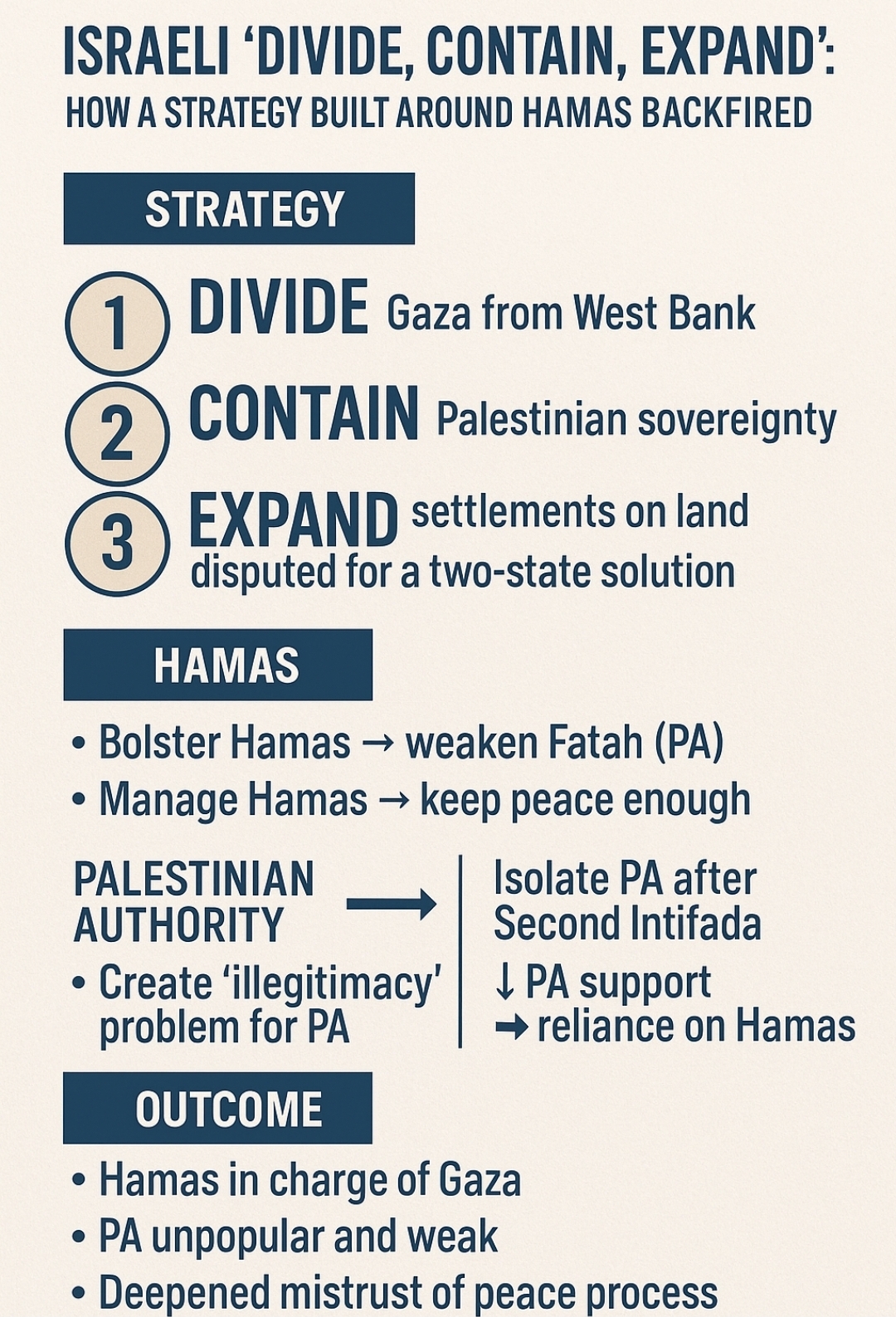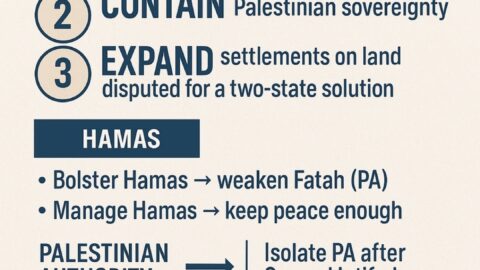After World War II, the United States effectively stepped into the role once held by the British Empire — not in name, but in influence. Britain’s colonies were collapsing, its economy was drained, and Washington emerged as the new center of global power. The U.S. inherited not only alliances and trade networks but also the geopolitical ambitions of maintaining global stability through military and financial reach.
Part of that inheritance involved managing the shifting politics of the Middle East. The region, once under British and French mandates, became a new arena for postwar strategy — a place where oil, ideology, and the early tensions of the Cold War intersected. The founding of Israel in 1948 became a focal point in this new order, shaped by both humanitarian impulses after the Holocaust and by the realpolitik of establishing a Western-aligned foothold in the region.
Meanwhile, the American intelligence apparatus, born from the wartime OSS and molded into the CIA, began operating closely with its British counterparts. Together, these agencies sought to shape outcomes abroad through covert influence — whether in Iran, Latin America, or the broader Middle East — in pursuit of a vision of global stability that often blurred the line between democracy and domination.
In the decades that followed, the machinery of global influence grew more sophisticated. The OSS’s transformation into the CIA signaled not only a bureaucratic shift but a philosophical one: the idea that global dominance could be maintained through information, covert action, and economic leverage rather than direct colonial rule. The British, veterans of centuries of imperial management, provided both the playbook and the partnership. The “special relationship” between Washington and London became less about shared language and more about shared methods.
In the Middle East, those methods played out in subtle and sometimes explosive ways. Western intelligence agencies moved behind the scenes to install, protect, or remove leaders who aligned—or didn’t—with the global order being shaped in Washington and London. Israel, emerging as a regional power with Western backing, became not just a homeland for Jews after genocide but also a strategic ally in a volatile region. To its supporters, it was a democratic foothold surrounded by autocracies. To its critics, it was an outpost of Western power whose existence deepened regional fault lines.
The collaboration between the CIA, MI6, and later Mossad reflected a broader strategic goal: to contain threats, control resources, and preserve a balance of power favorable to Western interests. From Iran in 1953 to the Suez Crisis in 1956, and throughout the Cold War, this network of intelligence and influence shaped the fates of nations. What began as an alliance for security became, over time, a system for maintaining a world order that prioritized stability over sovereignty.
By the twenty-first century, the old imperial map had been redrawn, but the logic behind it remained familiar. The same principles that once guided colonial administrators and Cold War strategists—divide adversaries, contain instability, and expand influence—continued to shape Western involvement in the Middle East. Israel, with its unmatched intelligence network and strategic position, became central to this calculus.
The “divide, contain, expand” approach—tolerating or even leveraging certain militant groups to fragment opposition—was not unique to Israel. The United States used similar tactics in Afghanistan, Iraq, and Syria, often arming one faction to counter another. In Israel’s case, the idea was that a fractured Palestinian movement would be easier to manage: Hamas could be contained and used as a counterweight to the Palestinian Authority, keeping the dream of a unified Palestinian state perpetually out of reach.
For a time, that strategy seemed to work. Gaza remained isolated, the West Bank divided, and Israel’s regional ties quietly expanded through economic and security deals. Yet, like many short-term security fixes, the policy carried the seeds of its own undoing. By sustaining division rather than resolving it, Israel—and by extension, its Western allies—helped entrench a cycle that kept both sides trapped in conflict.
What emerged was not peace or stability, but a controlled volatility that could only hold as long as everyone played their expected roles. When that balance broke, as it did in spectacular and horrifying ways, the strategy revealed its weakness: you cannot permanently contain a problem you helped create.
Update 2007 Hamas (know Hamas backstory)
In 2007, Israel’s head of military intelligence met the U.S. ambassador in Tel Aviv. The classified cable summarizing that meeting contains a jarring line: Israel would be “happy” if Hamas consolidated control of the Gaza Strip. The logic was cold and simple: if Hamas ruled Gaza, Israel could treat the enclave as a hostile foreign entity rather than an occupied territory—tighten a blockade, lower formal responsibility for civilians, and justify military pressure whenever rockets flew.
That sentence, resurfaced in reporting and analysis like Johnny Harris’s recent video, offers a window into a broader strategy pursued by the Israeli right for years, and most forcefully under Benjamin Netanyahu: keep the Palestinians divided, keep Hamas contained, and keep building “facts on the ground” in the West Bank. For a time, the strategy seemed to “work.” Then October 7, 2023 shattered the core promise it was supposed to uphold: security for Israelis.
This article follows the point-by-point arc laid out in Harris’s explainer, tracing how a tactic that looked savvy on paper became a disaster in practice.
The Security Promise Meets a Geography of Peril
The modern Israeli project was born from centuries of Jewish persecution. By the early 20th century, Zionism’s case for a Jewish state—somewhere, anywhere—was overwhelming. The movement fixed on historic Palestine, then under British control. After the Holocaust, the geopolitical energy behind a Jewish homeland intensified. The UN plan to partition the land into Jewish and Arab states ignited war; Israel was established; hundreds of thousands of Palestinians were displaced; armistice lines hardened into a tense map.
Security was Israel’s founding promise. Geography, however, guaranteed that security would be contested.
1967 and the Architecture of Control
Israel’s victory in the 1967 war put the West Bank and Gaza under its control. Over time, the occupation took on an intricate architecture—checkpoints, barrier walls, restricted roads, military law—that regulated Palestinian life. Israeli civilians began moving into the West Bank in growing numbers, establishing settlements widely condemned as illegal under international law. The map became a patchwork that made Palestinian self-rule more fragmented and less plausible with each passing year.
The First Intifada and Hamas’s Arrival
In the late 1980s, the First Intifada erupted: mass boycotts and demonstrations, stones against rifles, a population lashing out under occupation. Within that ferment, Hamas emerged in Gaza—an Islamist movement rejecting Israel’s right to exist and embracing violence as strategy. The uprising and Israel’s crackdown underscored what should have been obvious: permanent subjugation is not a security plan.
Oslo: A Real Opening—and Its Saboteurs
The 1990s brought the Oslo Accords, which created the Palestinian Authority and handed it limited governance in parts of the West Bank and Gaza. It was the first mutual framework that hinted at a political horizon. But hardliners on both sides set about ruining it. Hamas carried out bombings. In Israel, right-wing rallies branded Prime Minister Yitzhak Rabin a traitor; a far-right Israeli assassinated him. A leaked video later captured Benjamin Netanyahu, then a rising politician, telling settlers he had deliberately hobbled Oslo when he held power, insisting the real key to “peace” was unrestrained security control, not Palestinian sovereignty.
The Second Intifada and the Return of the Iron Fist
The early 2000s saw the Second Intifada—more organized, more lethal. Suicide bombings struck Israeli cities; Israeli forces pounded Palestinian locales. Roughly a thousand Israelis and three thousand Palestinians died. The political lesson many Israelis drew was blunt: the peace process invited violence; only maximal security measures could keep the public safe. Walls went up, checkpoints multiplied, and settlements kept expanding.
Disengagement, Elections, and a Split Hamas Could Exploit—and Be Exploited For
In 2005, Israel unilaterally withdrew its troops and settlements from Gaza, concentrating its gaze on the West Bank (“Judea and Samaria” in right-wing parlance). Palestinian elections the next year delivered a shock: Hamas won. A power struggle with Fatah spiraled into violence; by 2007, Hamas controlled Gaza and the Palestinian Authority governed the West Bank. Two rival governments, two clashing visions, mutual non-recognition.
Cue that 2007 cable: Israeli officials signaling that a Hamas-run Gaza served their strategy. With Hamas in charge, Israel could seal Gaza off, calibrate pressure at will, and argue that there was no unified Palestinian partner for statehood.
Netanyahu’s Playbook: Divide & Contain
Back in power from 2009 as “Mr. Security,” Netanyahu governed by an approach that can be summarized as: divide the Palestinians, contain Hamas, and keep building in the West Bank. In practice, that meant:
- Blockade and control: Treat Gaza as a hostile entity; restrict flow of goods, funds, and people; retain decisive leverage without the daily costs of ground occupation.
- Exploit division: With Hamas in Gaza and the PA in the West Bank, Palestinian diplomacy stayed fractured and weak. Calls for a Palestinian state were easier to swat aside.
- “Mow the grass”: When Gaza rockets flew, launch sharp, punishing operations to degrade Hamas, then return to the status quo—without removing Hamas entirely.
- Selectively stabilize Hamas rule: Israel periodically green-lit cash infusions into Gaza (famously in suitcases from Qatar) and negotiated prisoner exchanges (e.g., the Shalit deal), arrangements that helped Hamas maintain control while preserving the political split that benefited the Israeli right.
- Accelerate West Bank “facts on the ground”: Settlement numbers rose steadily after 2009, threading Jewish communities through strategic areas so that a contiguous Palestinian state became ever harder to imagine.
The paradox was not exactly a secret. A far-right Israeli lawmaker even called Hamas “an asset.” The regime on offer was a managed, grinding equilibrium: Gaza contained and periodically bombed; the West Bank atomized and steadily annexed de facto; Palestinians divided; Israelis told that security required all of this.
Why It Seemed to “Work”
For Israeli voters scarred by the Second Intifada, the approach felt safer than the uncertainty of negotiations. International partners often criticized settlement growth, but little changed on the ground. Each year that passed made a two-state map look less feasible; each ceasefire restored an uneasy calm. From a narrow political vantage point, the strategy looked shrewd.
October 7: The Core Promise Collapses
On October 7, 2023, Hamas pierced the illusion. In an unprecedented, coordinated assault by land, sea, and air, militants massacred and kidnapped Israelis at scale. Whatever its effectiveness at expanding West Bank control, the “divide and contain” doctrine failed at the one measure that matters most: preventing catastrophic attacks on civilians. The Israeli response—an immense military campaign in Gaza—has since produced staggering civilian suffering and further destabilized the region, while many Israelis question how their state could have been so unprepared.
Johnny Harris is explicit on a key point of moral responsibility: the atrocities of October 7 lie with Hamas and its leadership. Full stop. But he adds another layer of accountability: the Israeli leaders who treated Hamas as a useful foil, who prolonged a brittle, punitive status quo, and who prioritized settlement expansion over a durable political horizon. They must also answer for a strategy that generated the very insecurity it promised to prevent.
The Strategic Dead End—and the Harder Alternative
The lesson here is not new, but it is urgent. Containment without political horizon breeds radicalization. Occupation is not security. Dividing an adversary may be tactically useful, but when that adversary commands a densely populated territory and a desperate civilian base, “divide and conquer” easily becomes “divide and combust.”
If Israel is to make good on its original promise—real, lasting security for Jewish people—the tools must change. That means:
- Abandoning reliance on Hamas as the perpetual foil. Keeping a spoiler in power to undermine negotiations is a trap, not a policy.
- Re-centering human security—for Israelis and Palestinians—over territorial maximalism. The more degraded Palestinian life becomes, the more combustible the security environment grows.
- Rebuilding a political horizon that is credible to Palestinians, whether through renewed two-state contours, confederation models, or other arrangements that guarantee rights, mobility, and dignity.
- Rolling back impunity around settlement expansion that has turned maps into Swiss cheese and diplomacy into theater.
- Re-investing in legitimate Palestinian governance capable of monopolizing force and negotiating in good faith.
None of this is easy. All of it is harder than continuing the cycle of blockade, raids, rockets, and funerals. But October 7 revealed what the status quo truly was: not a strategy, but a delay.
Final Word
A Jewish state that rests its security on the permanent immiseration and division of its neighbors will not know security. A Palestinian national movement that lets armed spoilers dictate its course will not know freedom. The grim symmetry of this conflict is that each side’s worst actors have been each other’s best arguments. Breaking that logic is the only path to something safer, saner, and more just.
That begins with telling the truth about what hasn’t worked—even when, for a time, it looked like it did.
Core Thesis
- Claim: For years, right-wing Israeli strategy—embodied by Benjamin Netanyahu—has benefited from Hamas’s rule in Gaza. Keeping Palestinians divided (Hamas in Gaza vs. PA in the West Bank) weakens prospects for a Palestinian state and creates cover to expand settlements and maintain control—sold domestically as “security.”
- Result: This “divide & contain” approach appeared to “work” tactically, but failed strategically, as shown by the Oct. 7, 2023 Hamas attack, which devastated Israeli security and inflicted mass suffering on civilians on both sides.
Set-Up: A Leaked 2007 Cable
- 2007 meeting: Israel’s head of military intelligence meets the U.S. Ambassador in Tel Aviv.
- Key line in cable: Israel “would be happy” if Hamas took over Gaza, allowing Israel to treat Gaza as a hostile entity rather than an occupied territory—i.e., justify blockade/containment and reduce responsibility for civilians there.
Historical Backdrop (Compressed)
- Jewish persecution: 2,000 years of marginalization; 19th-century Zionism seeks a secure homeland.
- Location debates: Uganda/Argentina considered, but movement centers on historic Palestine.
- British Mandate → UN Partition (1947): Two states plan; Jerusalem internationalized.
- 1948 War/Nakba: ~700,000 Palestinians displaced; Israel established; borders become armistice lines.
- Security paradox: Israel exists to secure Jews, yet the location is conflict-prone; the tension persists.
1967 & the Occupation
- Six-Day War: Israel captures West Bank, Gaza, Sinai (later returned), Golan.
- Occupation regime: Checkpoints, walls, restricted movement; over time Israeli settlements spread (world largely deems them illegal), fragmenting Palestinian land and life.
First Intifada & the Rise of Hamas
- Late 1980s: First Intifada—boycotts, mass protests, stones vs. soldiers; Israel cracks down.
- Hamas emerges in Gaza: Islamist movement advocating armed struggle and destruction of Israel.
Oslo Accords (1990s): Hope & Sabotage
- Oslo I/II: Create Palestinian Authority (PA); limited self-rule in parts of West Bank & (most of) Gaza; settlements remain.
- Hardline backlash in Israel: Rallies portray PM Yitzhak Rabin as a traitor; Netanyahu among leading critics.
- Spoilers: Rabin assassinated by a far-right Israeli; Hamas bus bombings.
- Netanyahu (PM, late 1990s): According to a leaked video to settlers, he “sabotaged” Oslo, claimed only overwhelming force and freedom of action (especially on security) work; rejects Palestinian statehood as a path to peace.
Second Intifada (2000-2005)
- Escalation: Coordinated violence; Hamas suicide bombings; Israeli military operations.
- Toll: ~1,000 Israelis and ~3,000 Palestinians killed.
- Effect: Peace process discredited; “Mr. Security” politics gain traction; tighter controls, more barriers, more settlements.
Gaza Disengagement & Hamas Election (2005–2007)
- 2005: Israel withdraws from Gaza settlements/military presence; PA in charge.
- 2006: Hamas wins Palestinian elections; Fatah–Hamas split turns violent.
- 2007: Hamas seizes Gaza; PA remains in West Bank → Palestinian political schism.
The Strategy Harris Describes
- Treat Gaza as “hostile entity”:
- Blockade/contain everything in/out (people, goods, funds, construction materials).
- Minimizes Israeli on-paper obligations while maintaining decisive control.
- Exploit Palestinian split:
- Hamas in Gaza won’t recognize Israel; PA in West Bank seen as weak.
- Division undermines any credible, unified Palestinian negotiations for statehood.
- Periodic escalation management (“mow the grass”):
- Rocket fire from Gaza → short, punishing military operations to degrade Hamas and restore deterrence—without removing Hamas entirely.
- Selective legitimation of Hamas:
- Cash suitcases allowed into Gaza (widely understood as Qatari funds, green-lit by Israel) to stabilize Hamas’s rule and keep the split intact.
- Prisoner deals (e.g., Shalit swap: ~1,000 Palestinians for 1 Israeli) confer de facto legitimacy.
- A far-right Israeli lawmaker even called Hamas “an asset.”
- Accelerate West Bank facts on the ground:
- Settlement expansion and infrastructure weave through the West Bank, making a contiguous Palestinian state impracticable.
Why Netanyahu’s Camp Thought It Worked
- Domestically: Voters traumatized by the Second Intifada reward a security-first manager.
- Internationally: Condemnations rarely halt settlement growth; periodic Gaza wars end in ceasefires.
- Strategically: Each passing year reduces viable two-state maps; Palestinian despair and division deepen.
The Break: October 7, 2023
- Hamas’s unprecedented attack (by land/sea/air) kills and kidnaps Israelis at scale.
- Harris’s assessment: The “Hamas-in-Gaza” containment model catastrophically failed at its core promise: security for Israelis.
- Moral ledger: Harris insists responsibility for atrocities rests with Hamas, but argues Israeli leaders who used Hamas as a pawn and sustained the status quo bear responsibility for policy failure and for mass civilian suffering that follows.
Harris’s Normative Conclusions
- Supports the idea of a Jewish state, but argues current policy tools (divide, blockade, settlement expansion) undermine Jewish security and justice.
- Accountability needed for leaders who prolonged a strategy that collapsed so grievously.
- Path forward (implied): Abandon cycles of domination/containment; pursue arrangements that deliver real security and political horizon for both peoples.
Evidence the Video Leans On (as presented)
- Leaked 2007 cable (Israeli intel chief to U.S. Ambassador) welcoming Hamas control of Gaza as strategically useful.
- Leaked Netanyahu tape with settlers: boasts of undermining Oslo; advocates hitting Palestinians hard; insists Israel must retain overriding security control.
- Settlement growth trends since 2009.
- Cash suitcases into Gaza and Shalit prisoner exchange as signals of functional Netanyahu–Hamas interdependence.
Vocabulary & Legal Notes (as framed in the video)
- Occupation/settlements: The “world” (i.e., most states/UN bodies) calls moving citizens into occupied land illegal and immoral under international law.
- “Mowing the grass”: Israeli euphemism for periodic military operations to degrade Hamas capacity without attempting full regime change.
- Blockade: Tight Israeli (and Egyptian) controls on Gaza crossings, goods, and movement.
What the Video Doesn’t Deep-Dive (but hints at)
- Egypt’s role in Gaza’s closure (Rafah crossing).
- Internal Palestinian governance issues (corruption, repression, Hamas–Fatah reconciliation failures).
- Israeli domestic politics beyond Netanyahu (coalition constraints, judiciary debates).
- Regional dynamics (Iran’s support to Hamas/PIJ; Abraham Accords calculus).
Closing Beats
- Oct. 7 reframes Israeli politics and security assumptions.
- Call for accountability on both terrorist perpetrators and policymakers who sustained a brittle status quo.
- Johnny’s meta: Appeals for civil discussion; mentions Nebula (ad-free/platform support) and related documentaries.







